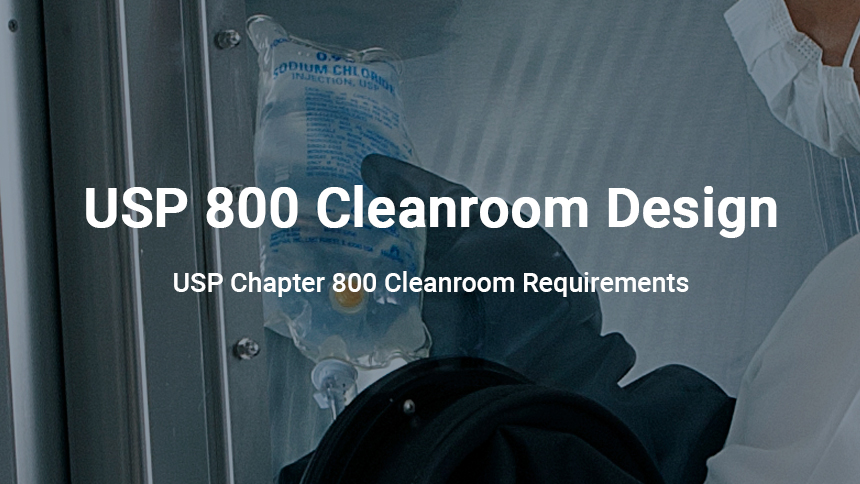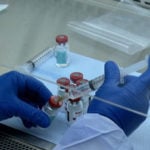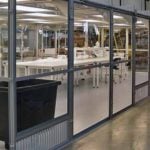USP 800 Cleanroom Standards Overview
USP 800 is a cleanroom standard issued in March of 2014 by the United States Pharmacopeial Convention (USP). The deadline for compliance may change, at the time of this article’s publication the deadline is scheduled for December 2019.
Most recent update (9/23/2019):
Revisions to <795> and <797> published on June 1, 2019 and which make reference to <800>, have been postponed until further notice, pending resolution of appeals of those chapters. Although these revisions have been postponed, <800> will become official on December 1, 2019.
The date and scope of adoption may differ on a state-by-state basis, thus consulting with a cleanroom specialist is encouraged.
Chapter 800 expands the safety of healthcare workers, patients, and the environment for processing hazardous drugs. It reflects a number of stages in the delivery of sterile and non-sterile compounds, including:
- Receipt and unpacking of hazardous drugs
- Storage of hazardous drugs
- Non-sterile hazardous drug compounding (if performed)
- Sterile hazardous drug compounding (if performed)
UPDATED BLOG POSTS:
USP 800: Cleanroom Construction Options
USP 800: Negative Pressure Cleanroom Design
Compendial Notices: Revised USP Chapters: JUNE 2019
General Chapter <800>
USP 800 STD Hazardous Compounding Risk Assessment
The takeaway from USP 800 cleanroom requirements is that exposing workers to hazardous compounds is not an acceptable risk. USP 800 environments mitigate the risk of harm to both the environment and workers when compounding or packaging hazardous drugs. That could include antineoplastic drugs, hormonal therapies, radiopharmaceuticals, bacteria, and viruses. Primarily, negative pressure cleanrooms and dedicated ventilation systems account for the greater portion of improved safety and thus the majority of required changes.
USP 800 compliant cleanrooms protect healthcare personnel, patients, and the environment when handling hazardous drugs as seen on the NIOSH hazardous-drug list. In contrast to USP 797, which upgrades process controls of sterile compounds, USP 800 expands specifically on the compounding of hazardous drugs (HDs).
Basic Requirements for USP 800 Cleanroom Compliance
Not Sure What You Need for USP 800?
For some healthcare facilities, upgrading or retrofitting a cleanroom for USP 800 compliance requires infrastructural and mechanical modifications. Small modifications may include equipment upgrades while more extensive upgrades may include expanding cleanrooms, new ductwork, and dedicated exhaust systems. Learn more.
Related Posts
-
How Does USP 800 Change Storage and Unpacking of Hazardous Drugs?
Facilities unpacking hazardous drugs within a negative pressure room do not require procedural changes to meet USP unpacking area requirements. Facilities unpacking HDs within positive pressure ante rooms or facility spaces will require reconsideration.
-
USP Posts Revised PDFs for USP 795, 797, 800, 825 - Updated November 2019
Updated November 2019: Where can I find updated USP 800, 797, and other compounding documentation? Are there any recent changes to USP documents? When is the official deadline for USP 800 compliance?
-
USP 797 Guidelines: Sterile Compounding Cleanroom Design, Components, and Procedure
USP Chapter 797 cleanroom design requires that facilities pressurize non-hazardous compounding and storage areas. ISO 5, 7 and 8 environments support primary engineering controls, buffer rooms, and ante-rooms. Updated: 4/18/2019
-
Updated: USP Sterile Compounding 2019
First published in 2004, USP Chapter has undergone proposed revisions as of July 2018. These revisions are now available for public comment.
-
USP 797 - Garbing and Donning
View USP 797 gowning standards and core requirements. For sterile processing, additional precaution is needed to assure that no sterile surfaces contact non-sterile surfaces during gowning, processing, or cleaning. Sterile garments and gloves are recommended…
-
Upgrading a USP 797 Cleanroom to USP 800?
New USP guidelines may present challenges for compounding facilities. Some facilities need infrastructural and mechanical modifications for compliance. System evaluation includes duct systems, HEPA fan filters, differential pressure standards, air monitoring, and external air exhaust…








You make a great point that USP 800 expands the safety of healthcare workers and the environment when processing drugs that can be hazardous. I like that you say this standard makes sure that workers are not exposed to hazardous compounds and requires clean rooms to avoid circulating contaminated air. My sister works at a pharmacy and this cleanroom standard gives me peace of mind that she will be as safe as possible when working.